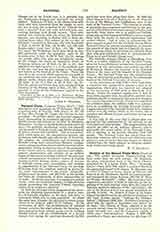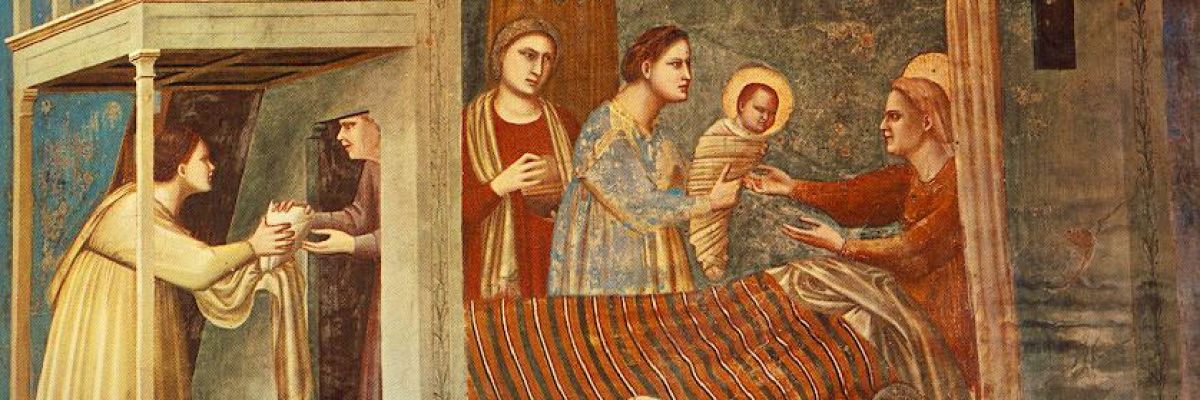

Nativity of the Blessed Virgin Mary, FEAST OF THE.—The earliest document commemorating this feast comes from the sixth century. St. Romanus, the great ecclesiastical lyrist of the Greek Church, composed for it a hymn (Card. Pitra, “Hymnogr. Graeca”, Paris, 1876, 199) which is a poetical sketch of the apocryphal Gospel of St. James. St. Romanus was a native of Emesa in Syria, deacon of Berytus and later on at the Blachernae church in Constantinople, and composed his hymns between 536-556 (P. Maas in “Byzant. Zeitschrift”, 1906). The feast may have originated somewhere in Syria or Palestine in the beginning of the sixth century, when after the Council of Ephesus, under the influence of the “Apocrypha“, the cult of the Mother of God was greatly intensified, especially in Syria. St. Andrew of Crete in the beginning of the eighth century preached several sermons on this feast (Lucius-Anrich, “Anfänge des Heiligenkultus”, Tubingen, 1906, 468). Evidence is wanting to show why the eighth of September was chosen for its date. The Church of Rome adopted it in the seventh century from the East; it is found in the Gelasian (seventh cent.) and the Gregorian (eighth to ninth cent.) Sacramentaries. Sergius I (687-701) prescribed a litany and procession for this feast (P.
L., cxxviii, 897 sqq.). Since the story of Mary’s Nativity is known only from apocryphal sources, the Latin Church was slow in accepting this oriental festival. It does not appear in many calendars which contain the Assumption, e.g. the Gotho-Gallican, that of Luxeuil, the Toledan Calendar of the tenth century, and the Mozarabic Calendar. The church of Angers in France claims that St. Maurilius instituted this feast at Angers in consequence of a revelation about 430. On the night of September 8, a man heard the angels singing in heaven, and on asking the reason, they told him that they were rejoicing because the Virgin was born on that night (La fète angevine N. D. de France, IV, Paris, 1864, 188); but this tradition is not substantiated by historical proofs. The feast is found in the calendar of Sonnatius, Bishop of Reims, 614-31 (Kellner, “Heortology“, 21). Still it cannot be said to have been generally celebrated in the eighth and ninth centuries. St. Fulbert, Bishop of Chartres (d. 1028), speaks of it as of recent institution (P.L., cxli, 320, sqq.); the three sermons he wrote are the oldest genuine Latin sermons for this festival (Kellner, “Heortology“, London, 1908, 230). The octave was instituted by Innocent IV (a. 1243) in accordance with avow made by the cardinals in the conclave of the autumn of 1241, when they were kept prisoners by Frederick II for three months. In the Greek Church the apodosis (solution) of the feast takes place September 12, on account of the feast and the solemnity of the Exaltation of the Cross, 13 and September 14 The Copts in Egypt and the Abyssinians celebrate Mary’s Nativity on May 1, and continue the feast under the name of “Seed of Jacob” 33 days (Anal. Juris Pont., xxi, 403); they also commemorate it on the first of every month (priv. letter from P. Baeteman, C. M., Alikiena). The Catholic Copts have adopted the Greek feast, but keep it September 10 (Nilles, “Kal. man.”, II, 696, 706).
FREDERICK G. HOLWECK


